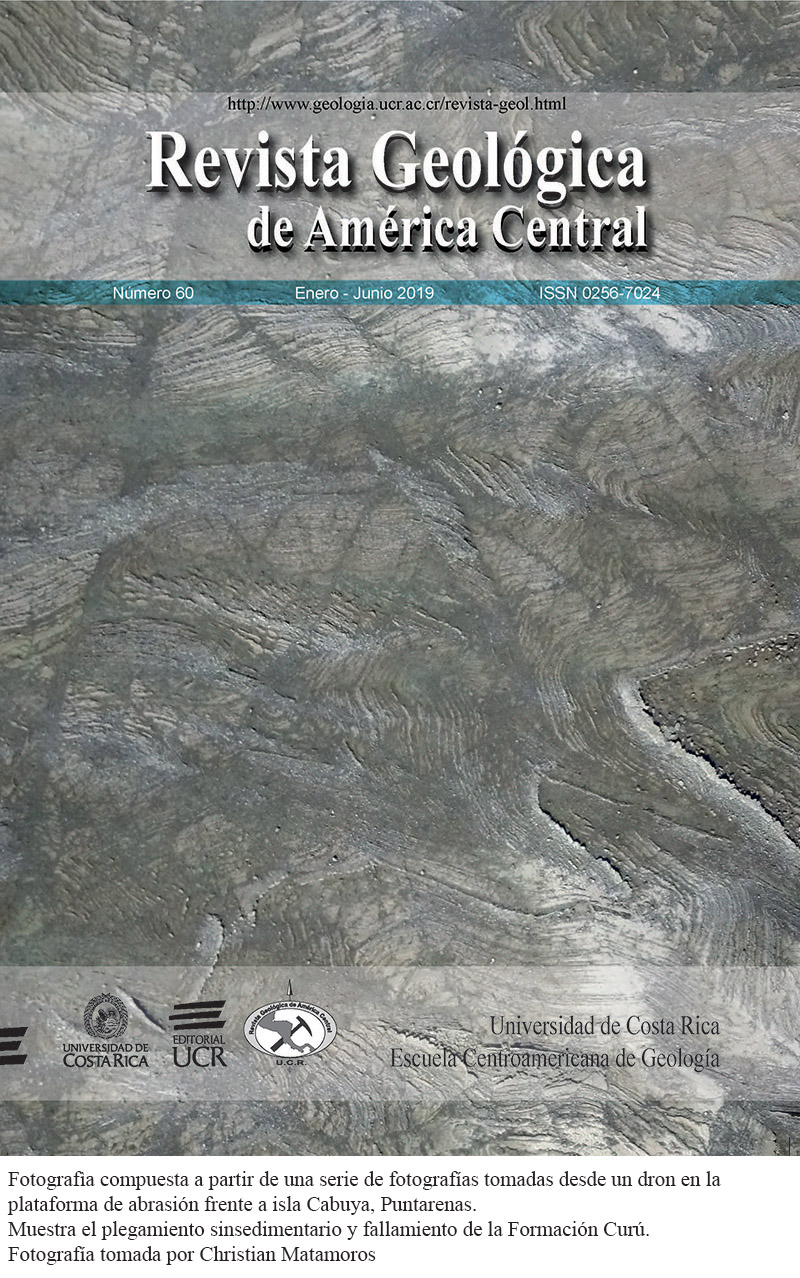Abstract
The El Güegüecho dome, located in the central part of El Salvador, is a monogenetic volcano located 3.5 km North of the caldera rim of Ilopango, which is a supervolcano that in its history has had about a dozen explosive eruptions. Approximately, 40 monogenetic volcanoes have been located around and in the interior of the caldera. The emergence of the El Güegüecho dome was preceded by vulcanian and phreatomagmatic eruptions that formed a tuff ring. The asymmetric coulée dome (15.5 km2) is composed of an evolved rhyolitc magma (73.2 % vol SiO2) that was emplaced at 1.88 ± 0.17 Ma (40Ar/39Ar). The dome was deformed by the transtensional type tectonic activity producing several blocks. The dome was covered by tephras from eruptions of Ilopango caldera. Petrographically, the glass matrix shows features of self-destruction due to the appearance of perlites and spherulites. Geochemically, this dome structure is one of the most evolved in the caldera region, but the composition of the incompatible trace elements of El Güegüecho are generally similar to the lavas and tephras pre and poscaldera, but it has low concentrations of medium and heavy rare earth elements. This dome is considered to be part of a precaldera felsic volcanism of the Lower Pleistocene, prior to the formation of the Ilopango caldera at 1.72 ± 0.02 Ma (40Ar /39Ar).
Comments

This work is licensed under a Creative Commons Attribution-NonCommercial-ShareAlike 3.0 Unported License.
Copyright (c) 2019 Revista Geológica de América Central






